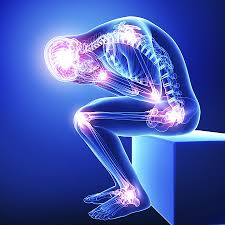A home health pain management program can be executed by either nursing or therapy. Patients requiring pain management should use a combination of medical (chronic pain medications) and non-medical intervention such as guided imagery, distraction, relaxation - among others. Incorporating a Pain Management Log
is also necessary to refine pain treatment...identifying pain triggers and relievers will provide critical insight on what to avoid and what the patient should continue doing and enjoying.
Pain Diagnoses for OASIS Coding & Casemix Assignment
Pain diagnoses can be coded under MMTA (medication management, teaching and assessment) for behavioral, cardiac and GI/GU conditions, neurological and musculo-skeletal rehabilitation, and wounds. Therefore, reimbursement for pain management can range from $800 to $3260 for 30 days. To optimize reimbursement it's recommended that an ICD for neurological rehabilitation or wound be used...under these conditions reimbursement is maximized...and your OASIS assessment should support the coding decision.
For home health providers providing pain management, the average Medicare reimbursement will be $2080 for the 1st 30-day billing episode and $2950 for the 2nd 30-day episode. Given the scope of services for a patient with uncontrolled pain that can affect safety & mobility, its important that resources - nursing and/or therapy and/or home health aide - are allocated appropriately. Uncontrolled pain is a high re-hospitalization risk.
Recommended Utilization for Patients with Daytime Caregiver Who is Teachable
Identifying a teachable caregiver to help the patient manage pain is one of the most important steps to successful discharge and a profitable episode.
Patients with a teachable daytime caregiver enable the agency to be more conservative with the number of visits provided as the caregiver can be taught signs and symptoms requiring a call to the physician, and preventive care to promote healing and recovery. In this scenario the services of home health aide and/or nursing may be avoided enabling the full episode to be allocated to physical and/or occupational therapy.
If the patient requires nursing and therapy the preferred utilization is 6 therapy and 5 nursing visits (HIPPS = 1BA11) to 12 therapy and 4 nursing (2BC31). If no nursing is provided, 11 to 16 therapy visits.
Just Nursing - Utilization for Patients with No Caregiver
Preferred utilization is 16 nursing visits (HIPPS = 1BA11) to 11 nursing visits (2BC31).
Omission of Nursing When Patient Requires Therapy
Under PDGM home health agencies should assign therapists to perform monitoring of co-morbidities and - very importantly - provide comprehensive diagnosis-specific teaching resources so that nursing can be omitted. Pain management nurse teaching can be completed by the therapist.
 Best Practice Assessment Strategies for OASIS D M1242
Best Practice Assessment Strategies for OASIS D M1242
- Determine pain level when the patient IS USING CURRENT PAIN INTERVENTION (medical and non-medical pain management techniques).
- Pain interferes with activity when the pain results in the activity being performed less often than otherwise desired, requires the patient to have additional assistance in performing the activity, or causes the activity to take longer to complete. Include all activities (e.g., sleeping, recreational activities, watching television), not just ADLs.
- When reviewing patient’s medications, the presence of medication for pain or joint disease provides an opportunity to explore the presence of pain, when the pain is the most severe, activities with which the pain interferes, and the frequency of this interference with activity or movement.
- Be careful not to overlook seemingly unimportant activities (for example, the patient says she/he sits in the chair all day and puts off going to the bathroom, because it hurts so much to get up from the chair or to walk).
- Evaluating the patient’s ability to perform ADLs and IADLs can provide additional information about such pain. Assessing pain in a nonverbal patient involves observation of facial expression (e.g., frowning, gritting teeth), monitoring heart rate, respiratory rate, perspiration, pallor, pupil size, irritability, or use of visual pain scales (e.g., FACES).
- The patient’s treatment for pain (whether pharmacologic or nonpharmacologic) must be considered when evaluating whether pain interferes with activity or movement. Pain that is well controlled with treatment may not interfere with activity or movement at all.
COPD Patient Teaching - Home Health Best Practices
PDGM Therapy: Is PT Always Indicated for a M1860 Mobility Deficit?



